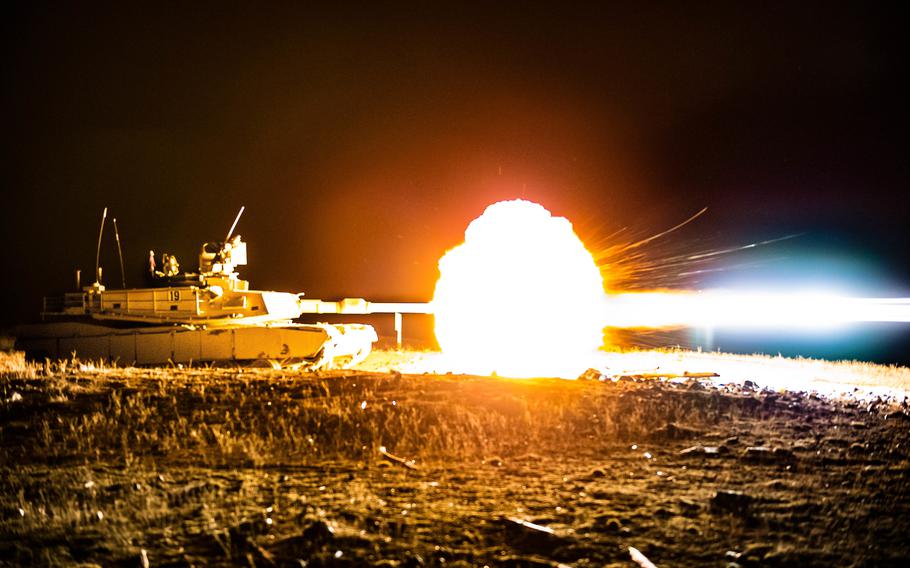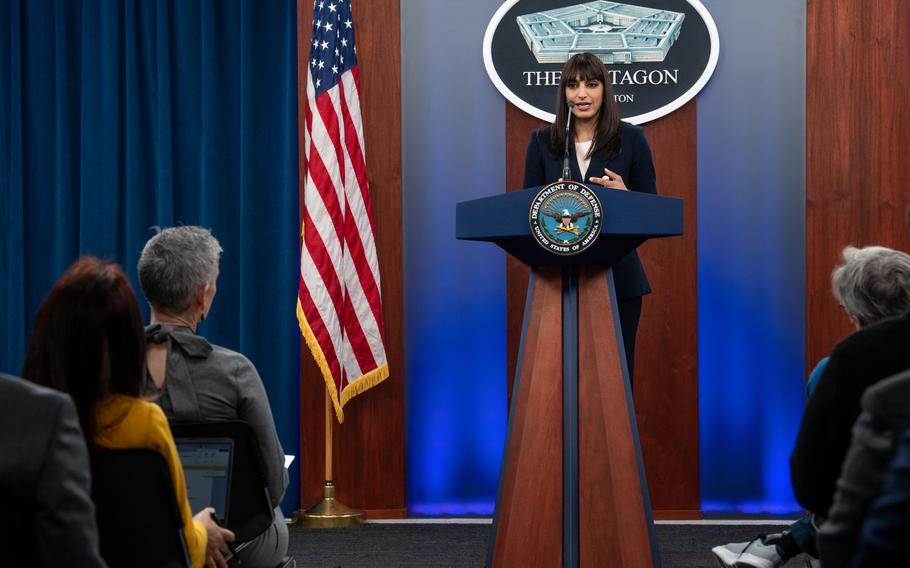
Idaho Army National Guard trains in 2019 with an M1A2 Abrams tank at the Orchard Combat Training Center near Boise. (Mason Cutrer/Idaho Army National Guard)
WASHINGTON — New Abrams tanks will be purchased by the U.S. to supply to Ukraine because the Defense Department doesn’t have any spares, delaying the shipment as Ukrainian forces prepare for an expected Russian offensive, a Pentagon spokeswoman said Thursday.
Defense Secretary Lloyd Austin recommended to President Joe Biden to obtain the tanks through the Ukraine Security Assistance Initiative — a funding program that procures military equipment from industry rather than from existing Defense Department stocks, Deputy Pentagon Press Secretary Sabrina Singh said.
“We just don’t have these tanks available in excess in our U.S. stocks,” she told reporters at the Pentagon.
Singh also said Ukraine will get 31 modified M1A2s Abrams, which is the newest and most sophisticated version of the tank that first entered service in the early 1990s.
The M1A2 has advanced equipment such as an independent thermal sight and can fire at two different targets virtually at the same time without having to lock on to them sequentially. It also has an automatic firefighting system in the crew compartment and can actively deflect computerized inbound missiles.
The U.S. version of the M1A2 also has armor and munitions made with depleted uranium, an extremely dense metal. However, Singh declined to provide any details about the tanks that the Ukrainians will receive. Federal policy forbids the U.S. from sending classified armor packages to other countries, according to several news reports.

Deputy Pentagon Press Secretary Sabrina Singh speaks Thursday, Jan. 26, 2023, during a news briefing at the Pentagon. (Jack Sanders/Department of Defense)
Pentagon officials have said it will be several months before Ukraine receives the American battle tanks. Some experts have speculated Ukraine might not see them until late 2023 or early 2024.
“You have to remember … these tanks are going to require training, maintenance, sustainment that’s going to take a very long time,” Singh said.
Singh also pushed back Thursday against criticisms that Pentagon officials reversed their review about sending Abrams tanks to Ukraine. Last week, defense officials said the tank might not work for Ukraine due to complex maintenance requirements and because they run on jet fuel and often need spare parts in the field. When the announcement to send the tanks came Wednesday, officials said equipment and weapons needs for Ukraine are always changing as the war against Russia evolves.
“[Our] position when it came to the Abrams has not changed,” she said. “It is going to be a challenge to sustain and maintain these tanks. That said, following the [Ukrainian] contact group meeting [in Germany last week] … Secretary [Austin] came away from those conversations feeling that we needed to provide a long-term commitment to Ukraine. That is why he recommended to the president that we provide the Abrams.”
The Defense Department has not announced where Ukrainian troops will be trained on the tanks, but officials have said it will occur somewhere outside Ukraine. A group of Ukrainians are now at Fort Sill, Okla., learning how to operate the Patriot missile defense system.
“We just don’t have a timeline,” Singh said. “We are trying to get the training set up but … where that’s going to be and when, I just don’t have that.”
Ukraine also will receive other battle tanks in the coming weeks that are expected to help them fend off invading Russian forces. This includes Challenger tanks from Great Britain, and Germany announced Wednesday that it will send a number of its Leopard 2 tanks.
Last week, news reports said German officials didn’t want to commit the Leopard 2 to Ukraine until the United States agreed to send Abrams tanks. The Pentagon has said there was no link between the decision to send the Abrams and Germany’s decision to send the Leopards.